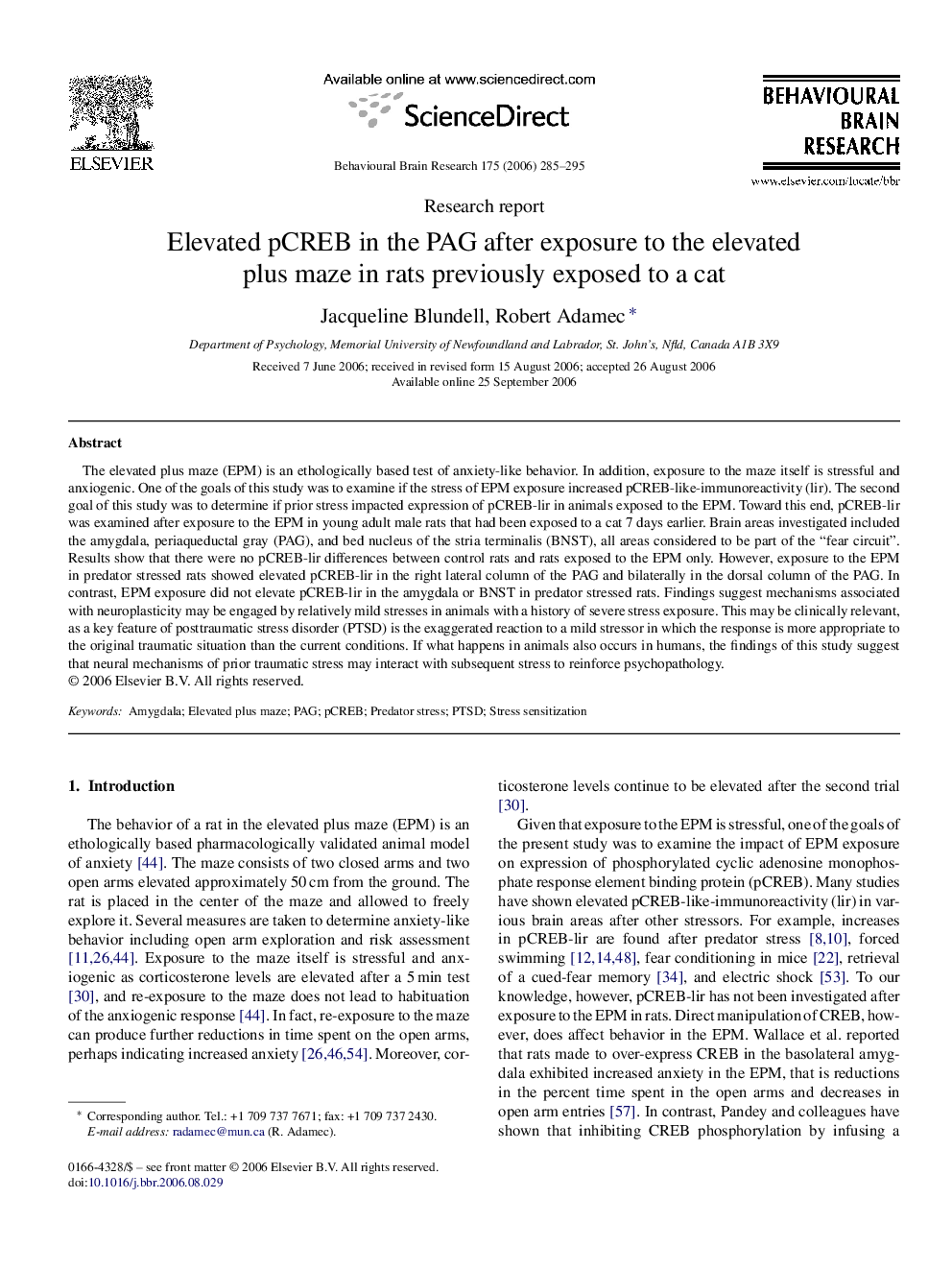| Article ID | Journal | Published Year | Pages | File Type |
|---|---|---|---|---|
| 4315898 | Behavioural Brain Research | 2006 | 11 Pages |
The elevated plus maze (EPM) is an ethologically based test of anxiety-like behavior. In addition, exposure to the maze itself is stressful and anxiogenic. One of the goals of this study was to examine if the stress of EPM exposure increased pCREB-like-immunoreactivity (lir). The second goal of this study was to determine if prior stress impacted expression of pCREB-lir in animals exposed to the EPM. Toward this end, pCREB-lir was examined after exposure to the EPM in young adult male rats that had been exposed to a cat 7 days earlier. Brain areas investigated included the amygdala, periaqueductal gray (PAG), and bed nucleus of the stria terminalis (BNST), all areas considered to be part of the “fear circuit”. Results show that there were no pCREB-lir differences between control rats and rats exposed to the EPM only. However, exposure to the EPM in predator stressed rats showed elevated pCREB-lir in the right lateral column of the PAG and bilaterally in the dorsal column of the PAG. In contrast, EPM exposure did not elevate pCREB-lir in the amygdala or BNST in predator stressed rats. Findings suggest mechanisms associated with neuroplasticity may be engaged by relatively mild stresses in animals with a history of severe stress exposure. This may be clinically relevant, as a key feature of posttraumatic stress disorder (PTSD) is the exaggerated reaction to a mild stressor in which the response is more appropriate to the original traumatic situation than the current conditions. If what happens in animals also occurs in humans, the findings of this study suggest that neural mechanisms of prior traumatic stress may interact with subsequent stress to reinforce psychopathology.
